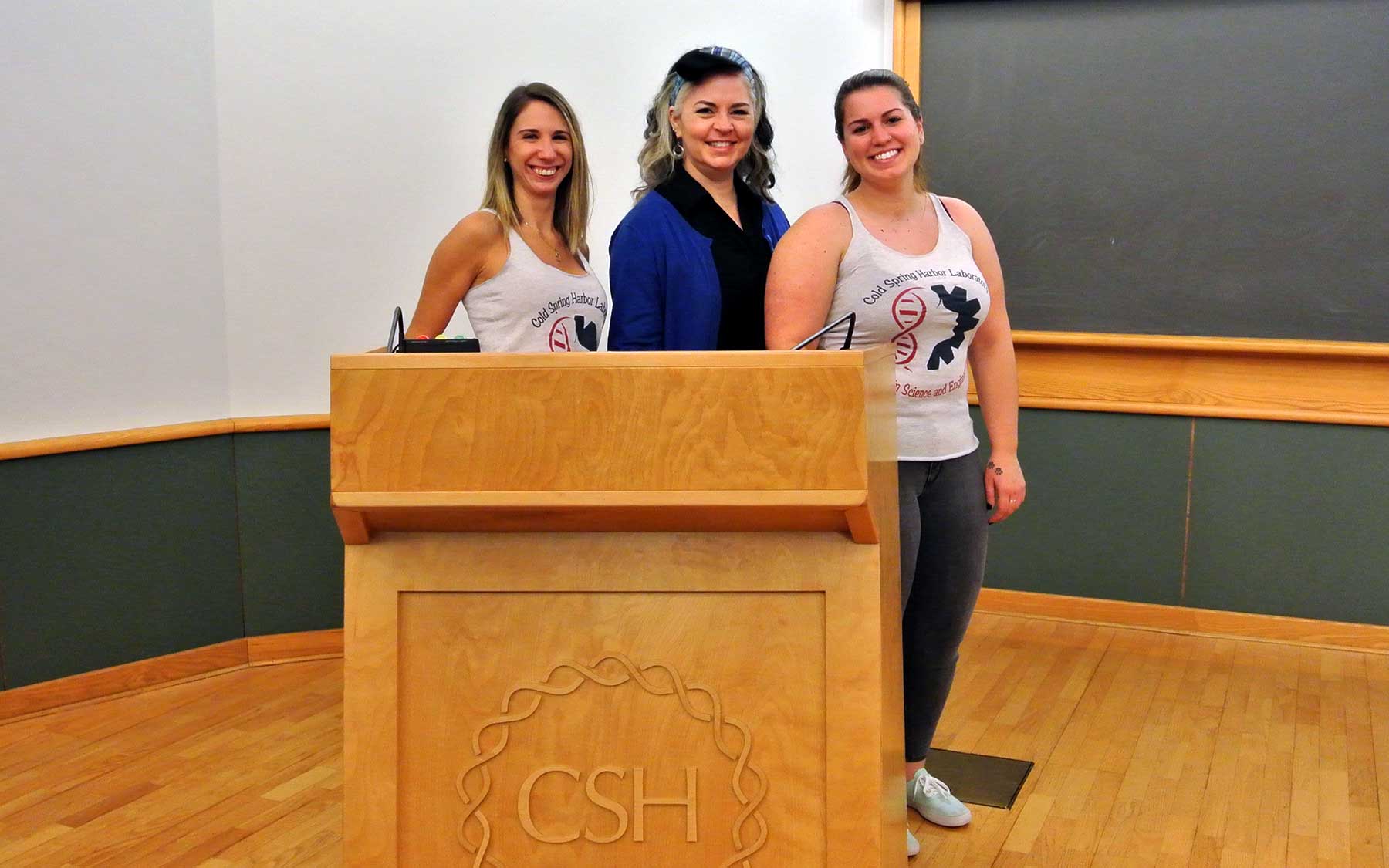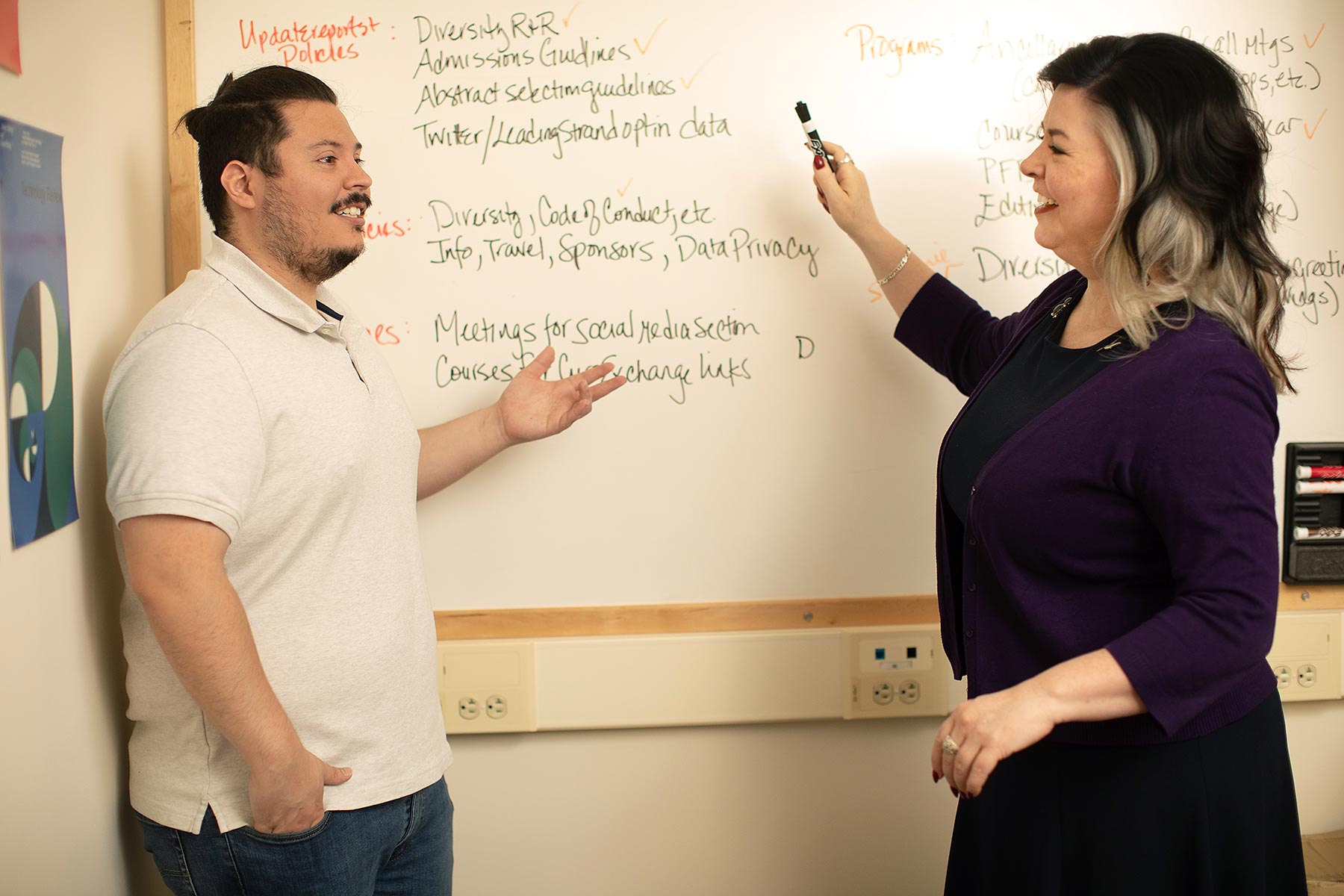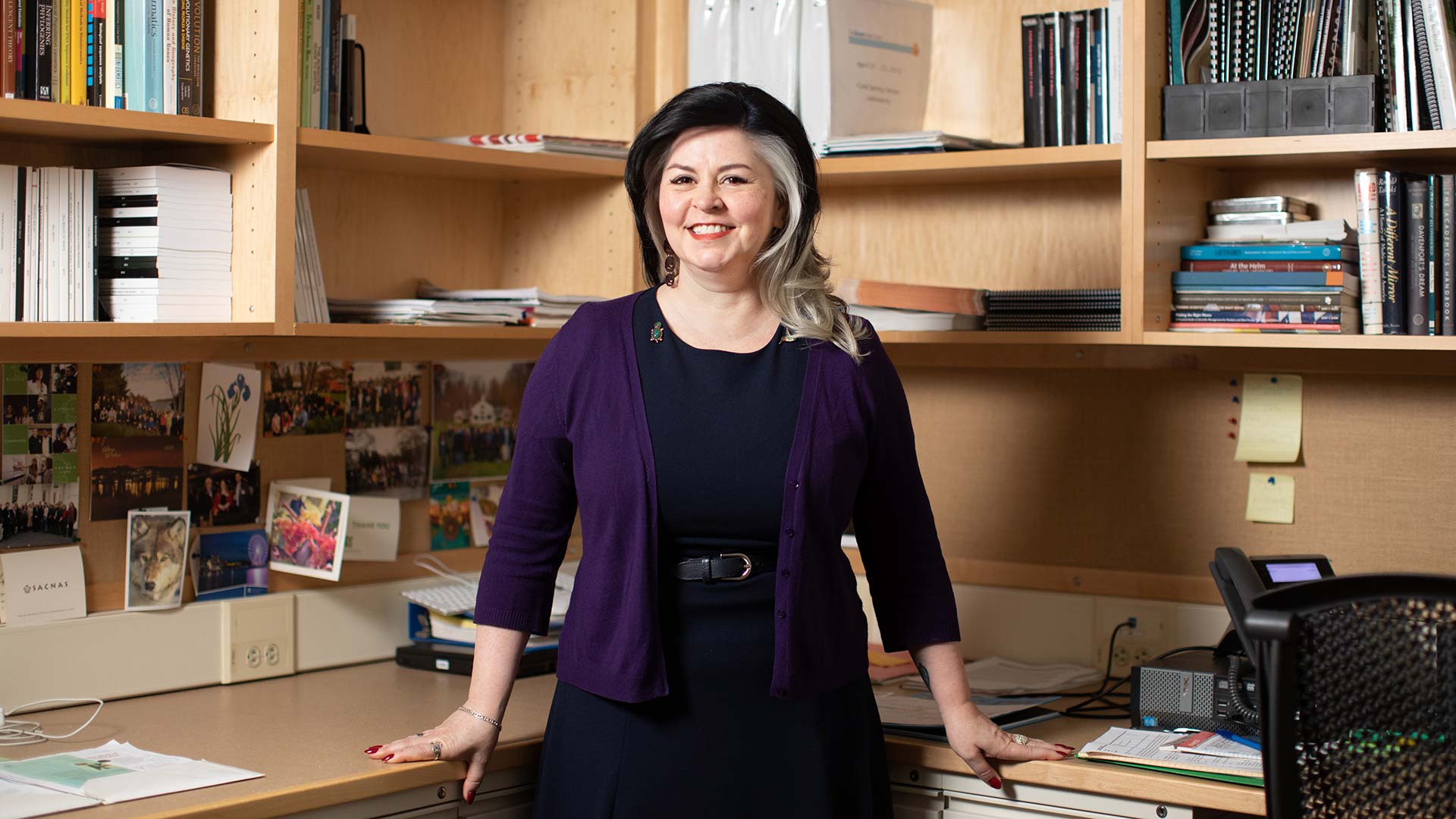Lambert’s parents met in Alaska as teenagers and together built their educations later, with three small children at home. “They both ended up getting their college degrees through night school while we were in elementary school,” she explained. Lambert, who moved several times when she was younger during her father’s 25-year career in the Army, has an academic background that includes statistics and genetics.
Educational training
Lambert earned a bachelor’s of science in mathematics from the Massachusetts Institute of Technology and a Ph.D. at the University of Washington (UW). She conducted her postdoctoral training at the University of Pennsylvania, where she taught molecular biology, human molecular genetics, and human evolutionary genetics. At UW she found genetic patterns of variation on the X chromosome that were different from what she anticipated. That led to her first publication and became a critical part of research on patterns of X-linked population structure in the evolutionary history of African populations.
As a science administrator, Lambert has supported grant writing, program development, scientific communication, and postgraduate teaching and education. An 11-year veteran of CSHL, Lambert first served as Program Manager for Science and Training in the Meetings & Courses Program. In 2019, she became the head of DEI.

SACNAS roots
Lambert has also risen in the ranks of the Society for the Advancement of Chicanos/ Hispanics and Native Americans in Science, or SACNAS. At her first SACNAS conference as a graduate student, she recalled feeling free to be herself. “When you go to SACNAS, all your identities are welcomed and valued,” she said. “Both sides of my family, and the US Army, shaped me into this complex person. What that ends up producing is a lot of empathy for people’s different experiences.” Lambert, who will serve as president of SACNAS during its 50th anniversary next year, believes diverse backgrounds strengthen institutions and enhance research.
Benefits of diversity
Lambert endorses diversity, equity, and inclusion from several perspectives. Inclusive teams advance knowledge by bringing together a range of experiences and perspectives to collectively deploy strong problem-solving skills. A diverse faculty can also provide a support network and role models for undergraduate and graduate students, leading to greater graduation rates. From a social justice perspective, she believes publicly funded research should benefit, and therefore involve and be conducted by, the entire country.
As the president-elect of SACNAS, she supports a welcoming and inclusive community where people can ask hard questions and bring their entire selves to work.

Lambert understands the need to communicate the value of scientific careers to families and cultures where such pursuits are unfamiliar. “There’s a real understanding of what it means to work in medicine,” Lambert said. “The scientific track is much longer and much more nebulous.” Lambert described how SACNAS members do pre-college outreach in their communities to prospective scientists and their families.
“A steady hand”
As a collaborator, Lambert impressed former SACNAS president Gabriel Alonzo Montaño; a professor in the Department of Applied Physics and Materials Science, and Chief Diversity Officer at Northern Arizona University. Montaño admired her dedication, determination, and commitment to SACNAS and who and what it represents. “Her steady hand was one of the calming influences on the society,” Montaño said. He believes Lambert will be an effective leader and serve as a role model. She has often lived her life “as the only one” with her background in a room full of researchers, he said. “In terms of being a Native American female scientist in the room, she is almost always it. There’s incredible value in that.”
In her roles at CSHL and SACNAS, Lambert said she regularly thinks about graduate students who are going through scientific training. She would like to empower them to “do great science and to make great choices about their lives. Everything is in front of them. That picture drives me.”
Written by: Daniel Dunaief, Science Writer | publicaffairs@cshl.edu | 516-367-8455
